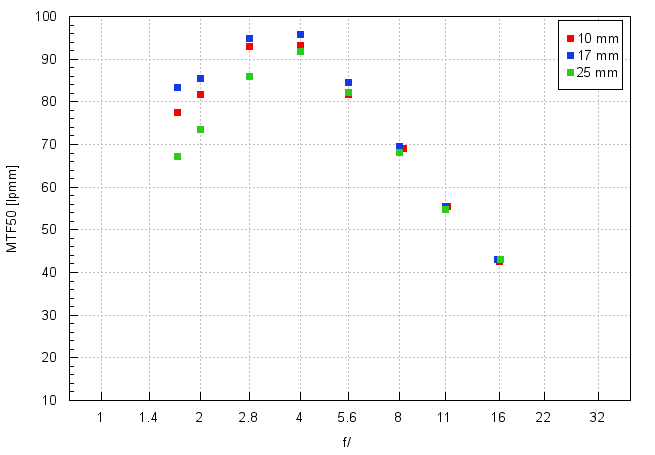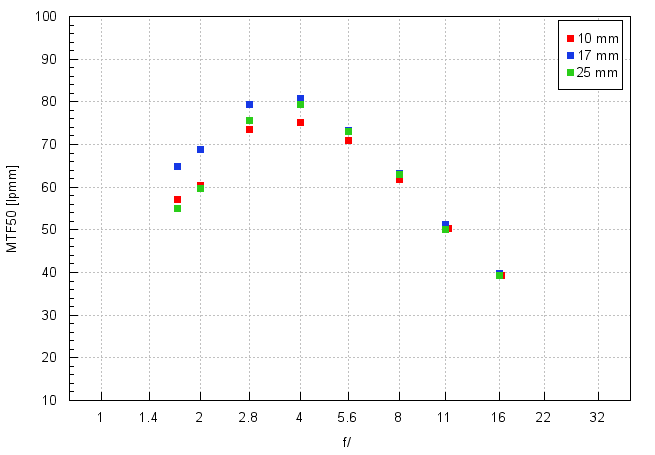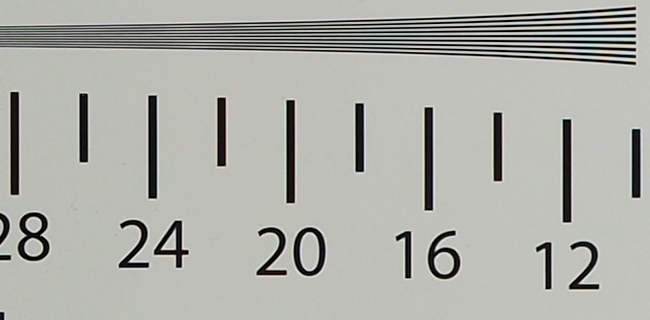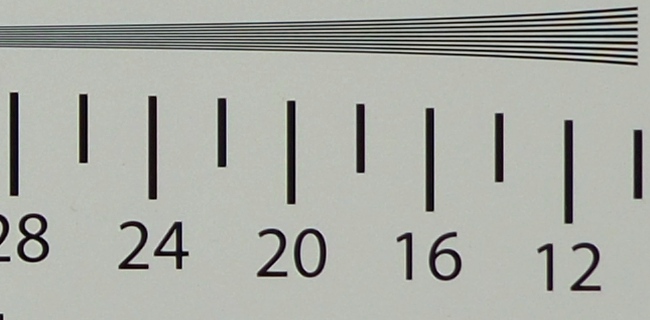Panasonic Leica DG Vario-Summilux 10-25 mm f/1.7 ASPH
4. Image resolution
Now let’s check how the tested lens compares; a graph below presents its results at 10, 17, and 25 mm in the frame centre.

Please Support UsIf you enjoy our reviews and articles, and you want us to continue our work please, support our website by donating through PayPal. The funds are going to be used for paying our editorial team, renting servers, and equipping our testing studio; only that way we will be able to continue providing you interesting content for free. |
- - - - - - - - - - - - - - - - - - - - - - - - - - - - - - - - - - - - - - - - - - - - - - - -
The graph is a clear indicator you deal with an outstanding lens. At the 10 mm focal length maximum MTFs reach 93 lpmm; at 17 mm they are over 95 lpmm, and at 25 mm they get to less than 92 lpmm. This performance, withint the margin of error, interlocks with that of the remarkable Olympus M.Zuiko Digital ED 45 mm PRO and is not much weaker than the performance of our record-holder, the Olympus M.Zuiko Digital ED 17 mm f/1.2 PRO. If an f/1.7 zoom lens is able to perform not much worse than an f/1.2 prime I suppose there is nothing more to add.
Now let's check how the edge of the frame looks like – a significant angle of view and the good f/1.7 aperture mean it wasn't easy to correct for sure.

The maximum values you observe near 80 lpmm and they confirm our very high opinion of the tested lens. It's worth reminding here that we've happened to test prime lenses which didn't manage to get to 80 lpmm in the frame centre. What's more, in the case of the Panaleica there are no big differences between particular focal lengths and the image quality by f/1.7 at all focal lengths is at least decent – hats off! Such lenses are exactly the reason why it is worth investing in the Micro 4/3 system.
At the end of this chapter, traditionally, we present crops taken from photos of our resolution testing chart saved as JPEG files alongside RAW files we used in our analysis above.
| Olympus E-M5 II, JPEG, 17 mm f/4.0 |
 |
| Olympus E-M5 II, JPEG, 25 mm, f/1.7 |
 |






